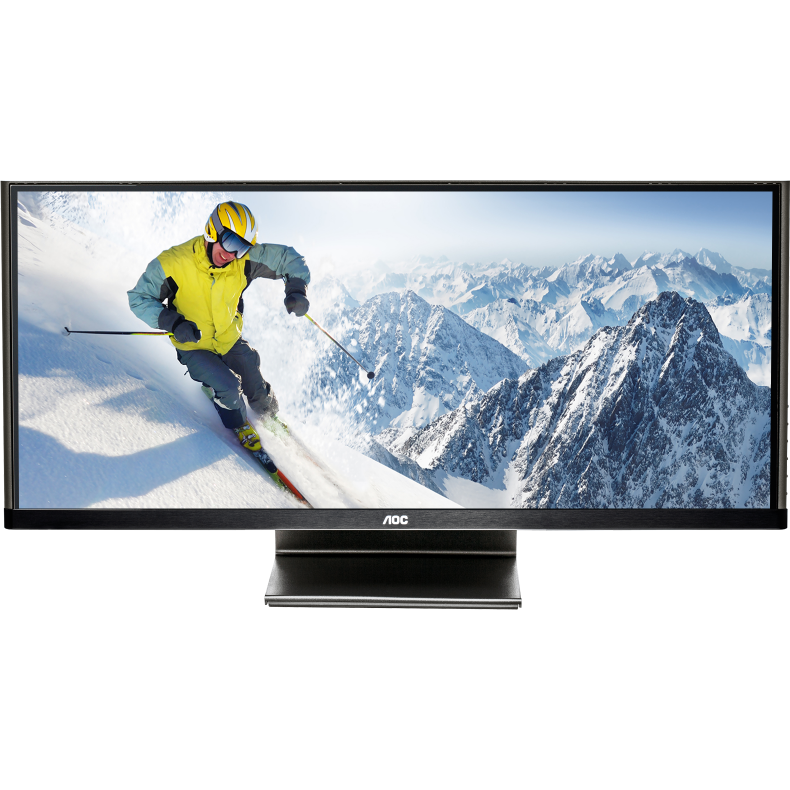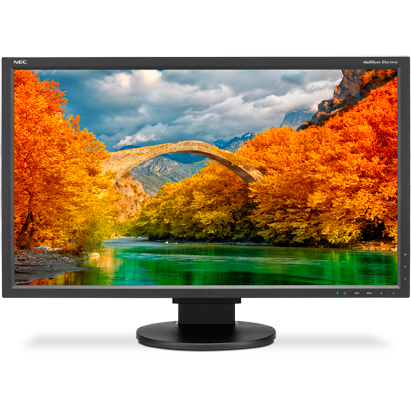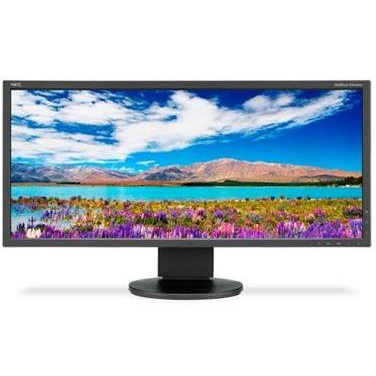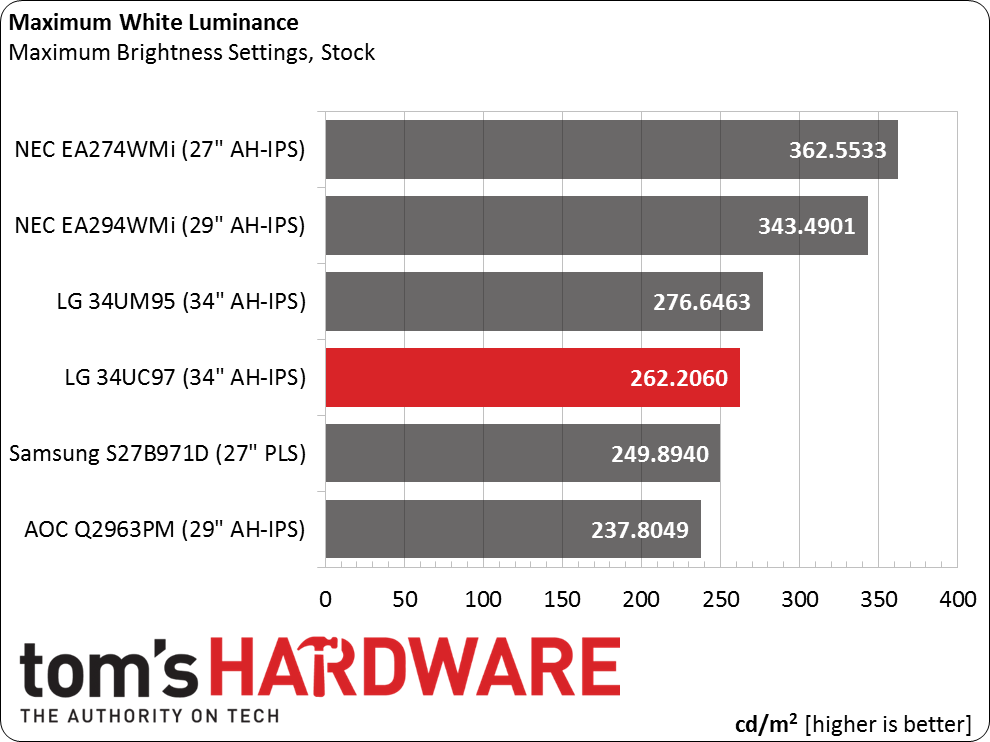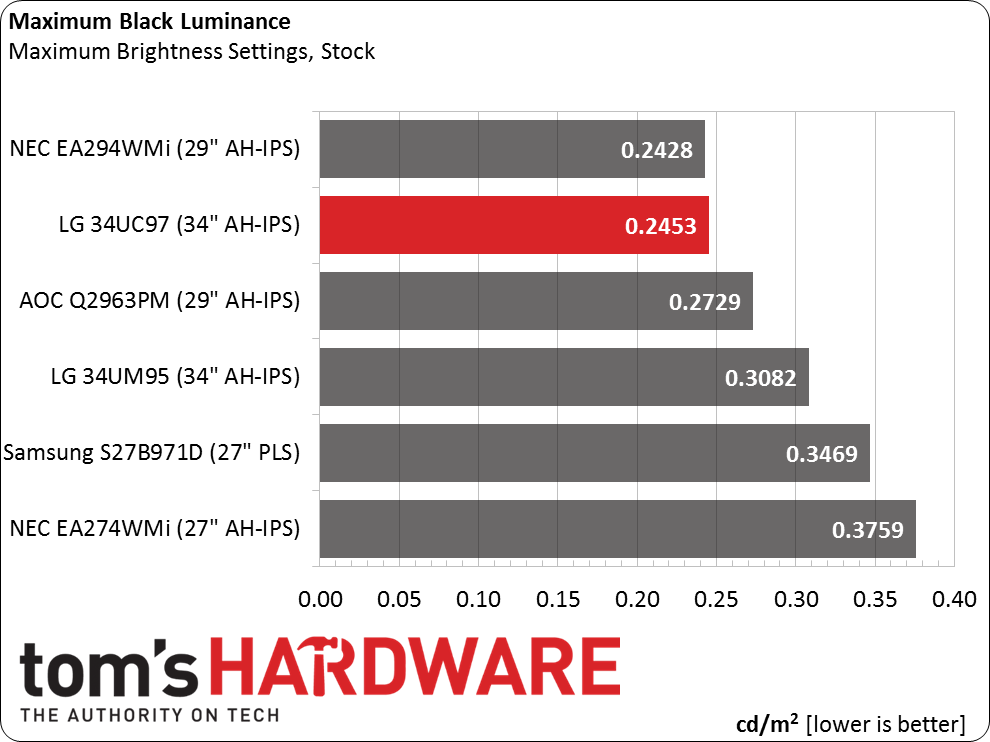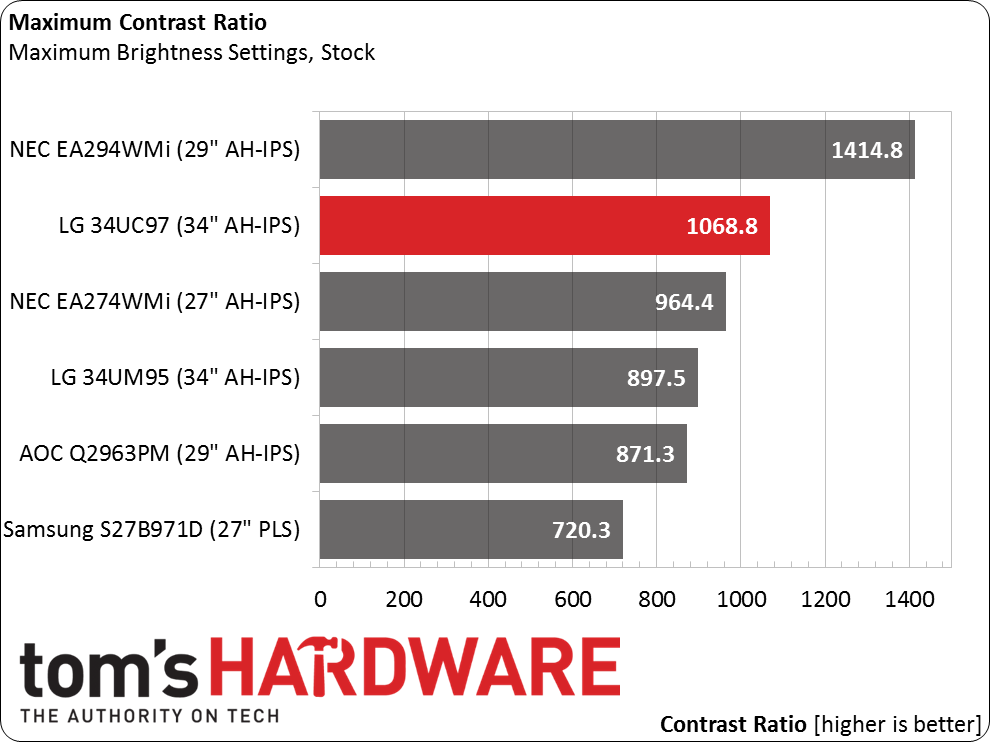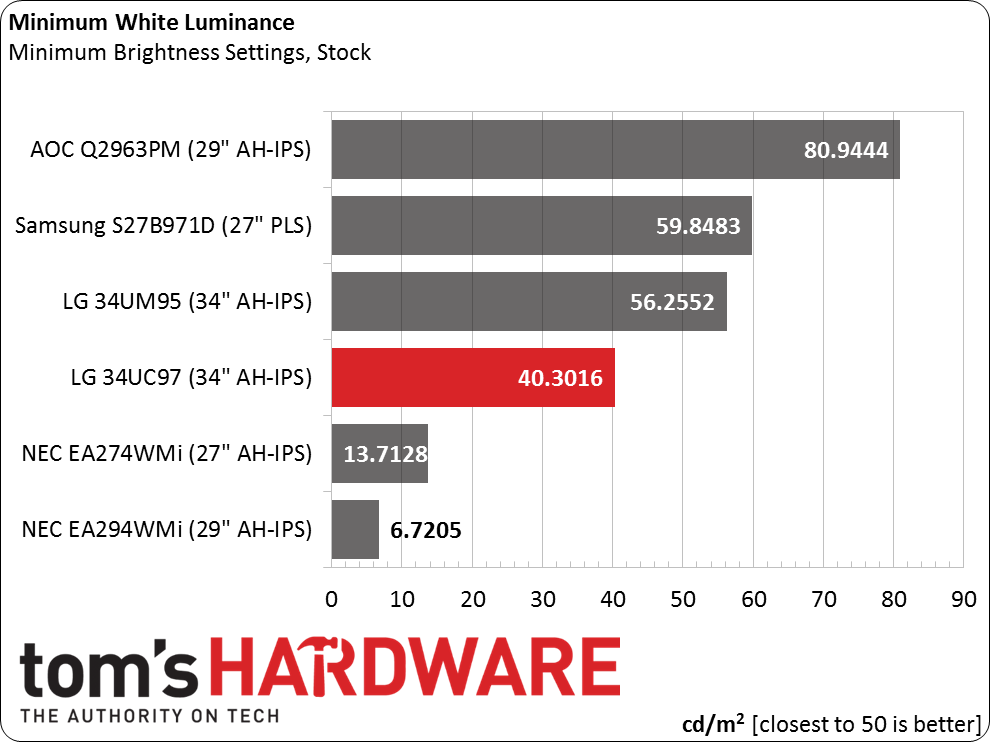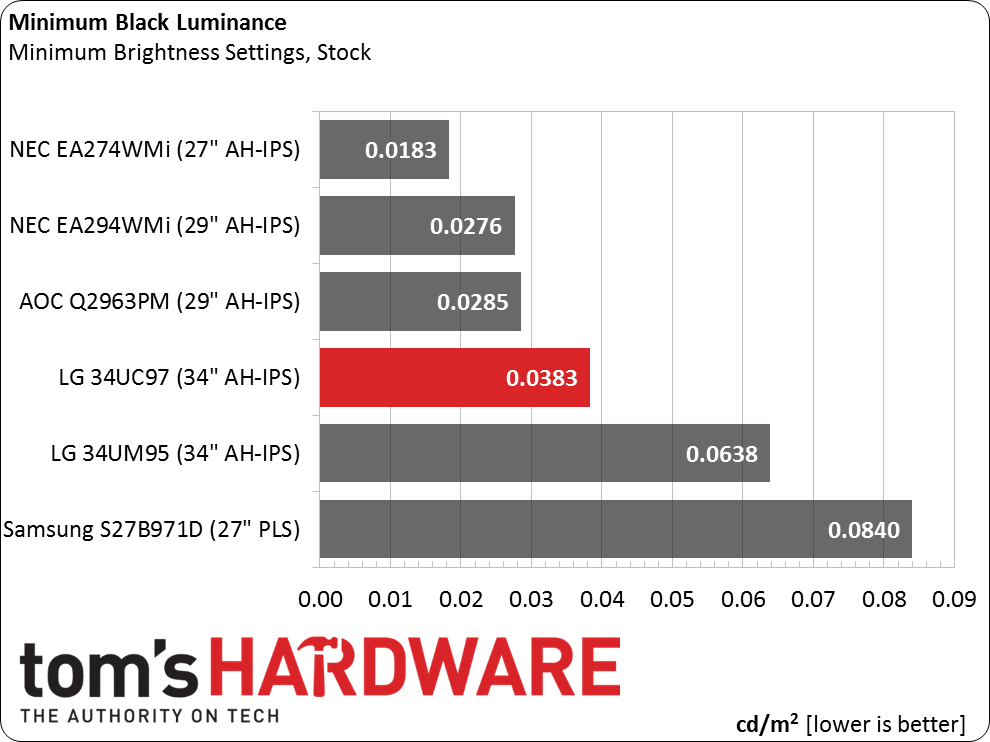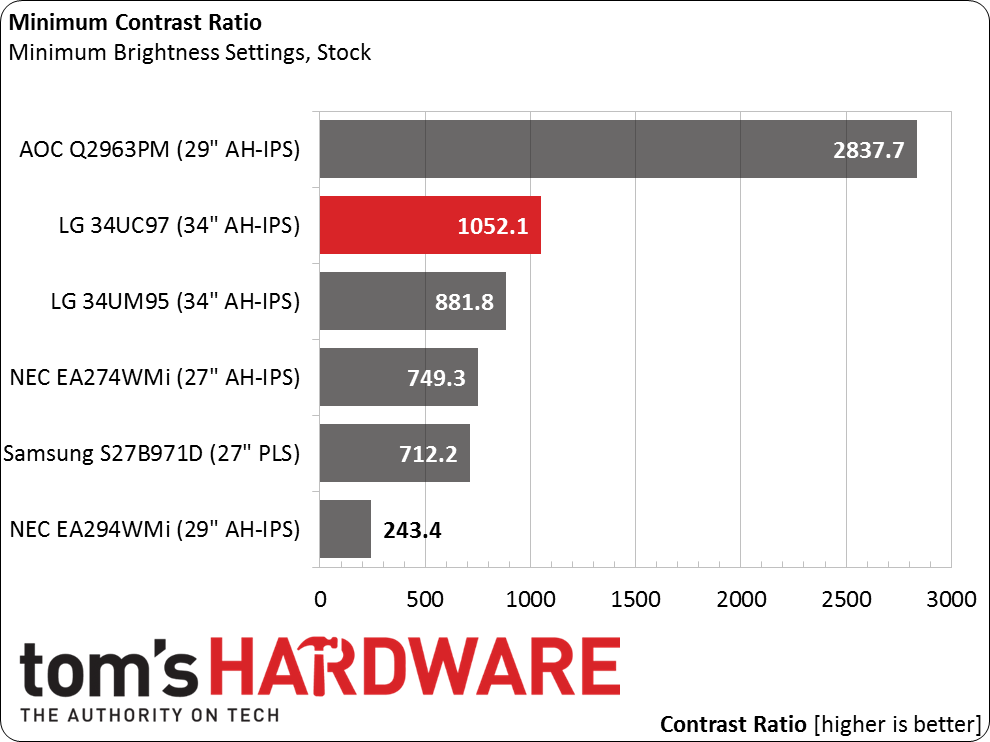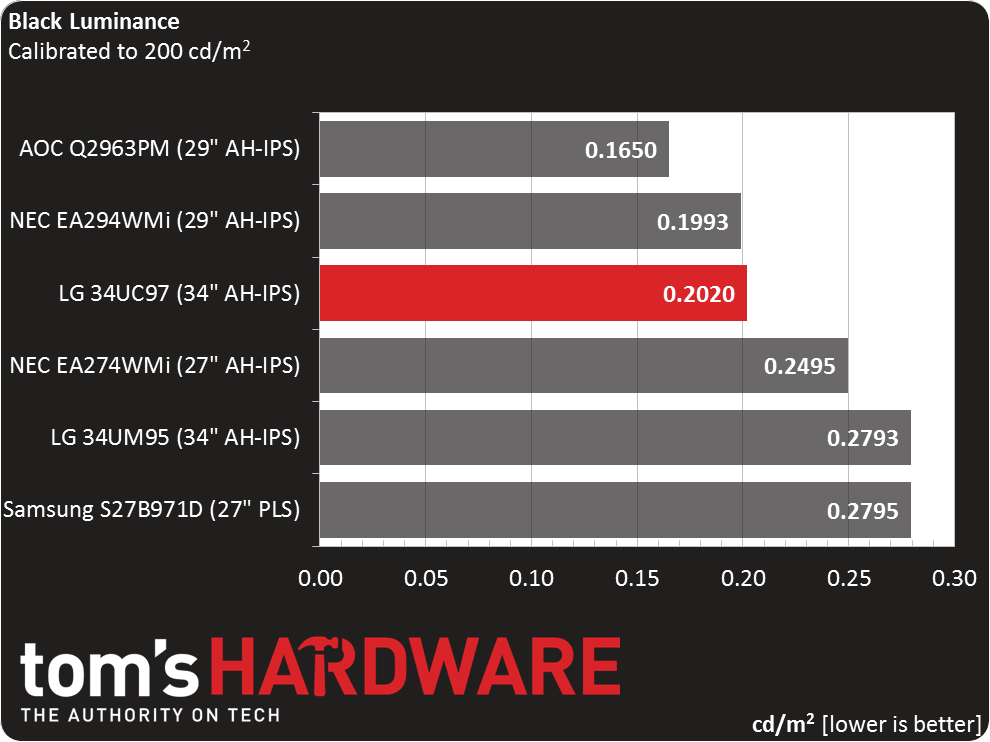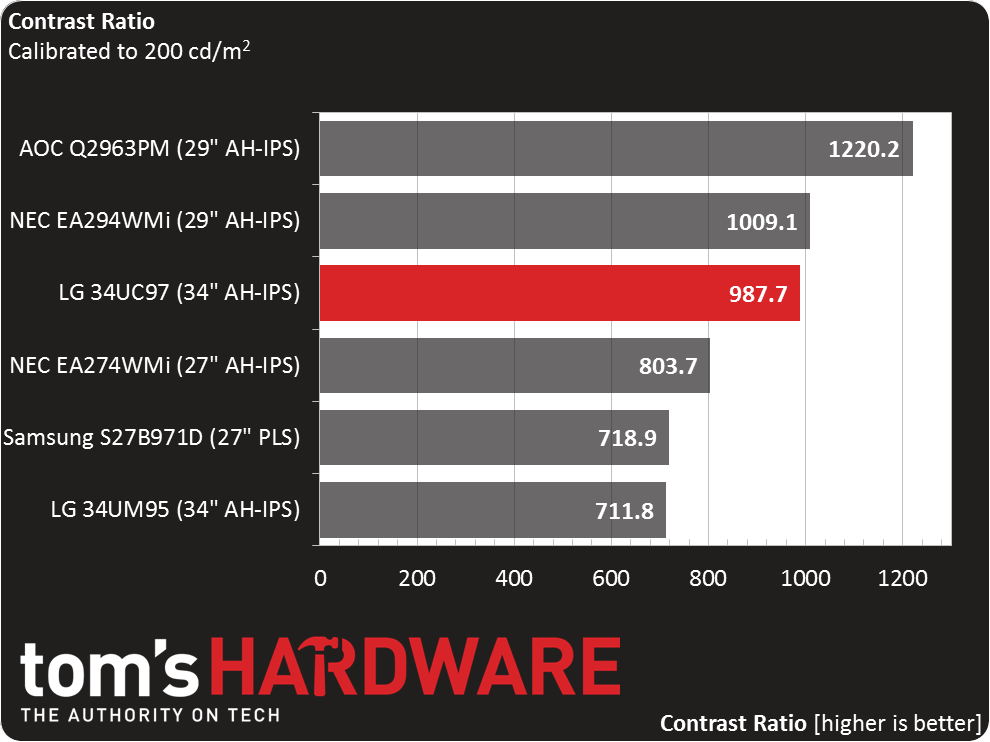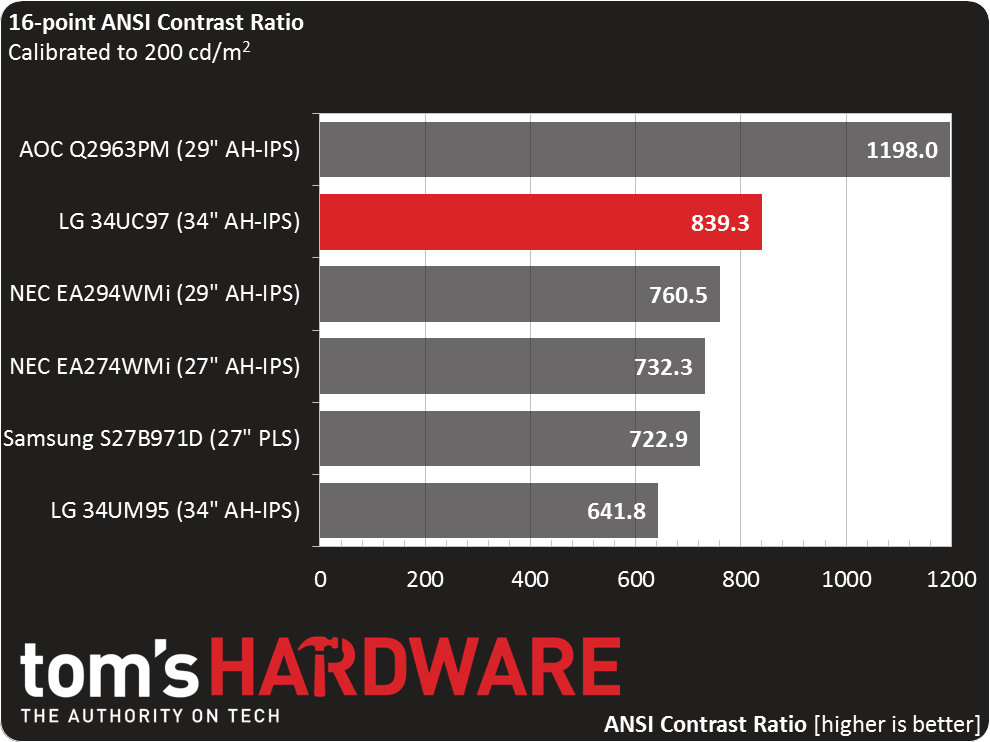LG 34UC97 34-Inch Ultra-Wide Curved Monitor Review
Yes, curved monitors are a thing now. We got our hands on LG's 34UC97 sporting a 34-inch width, 21:9 aspect ratio and 3440x1440 native resolution. It's pricey; is worth the premium you'll pay to be the first one on your block with this screen, though?
Why you can trust Tom's Hardware
Results: Brightness And Contrast
To read about our monitor tests in-depth, please check out Display Testing Explained: How We Test Monitors and TVs. Brightness and Contrast testing is covered on page two.
Uncalibrated – Maximum Backlight Level
We’ve now reviewed four Ultra-Wide (WQHD) monitors: LG’s 34UC97 and 34UM95, AOC’s Q2963PM and NEC’s EA294WMi. To bring our comparison group up to six, we’re including two luxury business-class QHD/IPS screens with 16:9 aspect ratios, Samsung’s S27B971D and NEC’s EA274WMi. They have the same effective resolution and height, just less width.
These panels are all edge-lit and you can see how the greater width of the WQHD displays cuts maximum output. None of them can hit their claimed 300cd/m2 spec. Unless you need to use the monitor outdoors or in a brightly-lit room though, it’s not a deal-breaker. If you do need the extra light, one of the 27-inch QHD screens will work.
The 34UC97 misses the top black level spot by a mere .0025cd/m2. That’s pretty much a wash, since you can't see such a slight difference. Like its flat cousin, the 34UM95, it delivers nice deep blacks, even with the backlight maxed.
We’re always happy to see an LCD monitor exceed a 1000:1 contrast ratio. As you’ll see later, calibration isn’t an absolute necessity so you can enjoy excellent image depth and accurate color right out of the box.
Uncalibrated – Minimum Backlight Level
Dropping the backlight to zero makes the image fairly dim, but not too far below our 50cd/m2 standard. Upping the slider to level five produces that output.
Both NEC monitors' black levels are extra-low thanks to their super dark minimum backlight levels. The numbers are impressive, but not really practical. However, the 34UC97 and Q2963PM deliver solid usable images when the lights are off. You can also see a major improvement over the 34UM95.
Get Tom's Hardware's best news and in-depth reviews, straight to your inbox.
Minimum contrast is rock-solid at only a tiny bit less than the maximum result. Both LG monitors deliver consistent performance at all backlight levels. AOC's solution returns a great result, but it’s not even close to its maximum measurement. That means you’ll have to find a sweet spot for ultimate image quality. Bravo LG!
After Calibration to 200cd/m2
After calibration, the black level is still excellent at only .2020cd/m2. Although the gains in accuracy are small, we feel it’s worth the effort since there’s no sacrifice in image depth.
Calibrated contrast drops only about seven percent from the maximum number. It’s a tad below 1000:1, though you’re unlikely to see that difference in actual content. We think the 34UC97 looks fantastic displaying all kinds of images, from Excel spreadsheets to Hollywood movies.
ANSI Contrast Ratio
The ANSI result is a little low due to hotspots in the screen’s corners. You’ll see later how that affects the black field uniformity test. Since this is the first display of its kind (in the computer world at least), there is room for improvement that we’ll likely see in future product generations.
Current page: Results: Brightness And Contrast
Prev Page OSD Setup And Calibration Of The LG 34UC97 Next Page Results: Grayscale Tracking And Gamma Response
Christian Eberle is a Contributing Editor for Tom's Hardware US. He's a veteran reviewer of A/V equipment, specializing in monitors. Christian began his obsession with tech when he built his first PC in 1991, a 286 running DOS 3.0 at a blazing 12MHz. In 2006, he undertook training from the Imaging Science Foundation in video calibration and testing and thus started a passion for precise imaging that persists to this day. He is also a professional musician with a degree from the New England Conservatory as a classical bassoonist which he used to good effect as a performer with the West Point Army Band from 1987 to 2013. He enjoys watching movies and listening to high-end audio in his custom-built home theater and can be seen riding trails near his home on a race-ready ICE VTX recumbent trike. Christian enjoys the endless summer in Florida where he lives with his wife and Chihuahua and plays with orchestras around the state.
-
Grognak I sure wish I could afford a screen like that, or the rig to go with it. Still, it's interesting how 21:9 just feels more natural when human FOV is about 4:3. It makes for great gameplay experiences, especially in first person games.Reply -
Sanjirox Maybe it's 120 degrees per eye in which case 4:3 is a perfect match if you can only use one eye.Reply -
arossetti Waiting to see the new gaming model -u67. I'm sure the price on that one U.S. gonna suck too! But it is like buying two monitors.Reply -
Merry_Blind @Grognak Interesting! I've always wondered what was the actual aspect ratio of our vision. That 4:3 you talk about, is it per eye individually? or the two combined together?Reply -
Fokissed Human FOV, according to wikipedia:Reply
"The approximate field of view of an individual human eye is 95° away from the nose, 75° downward, 60° toward the nose, and 60° upward."
"With eyeball rotation of about 90° (head rotation excluded, peripheral vision included), horizontal field of view is as high as 270°."
This means 155°:135°(31:27, very squarish) for nonmoving eyes, and 270°:135°(2:1) for moving eyes. -
RedJaron I think it's unforgivable that they didn't pack the USB cable. A USB3 A-to-B cable is not something most people have just have sitting on a shelf. You could argue that someone spending $1300 on a monitor has the money to pick one up, but I say for $1300 LG could have included a $5 cable in the box. Just ridiculous.Reply -
teahsr We know this is an expensive piece of equipment, but there isn’t anything else like the 34UC97 out there.Reply
^^Except my Dell U3415W that is.....which is awesome..
Now that 3440x1440 is around and more manufacturers are making this resolution, can we get it included in reviews?
